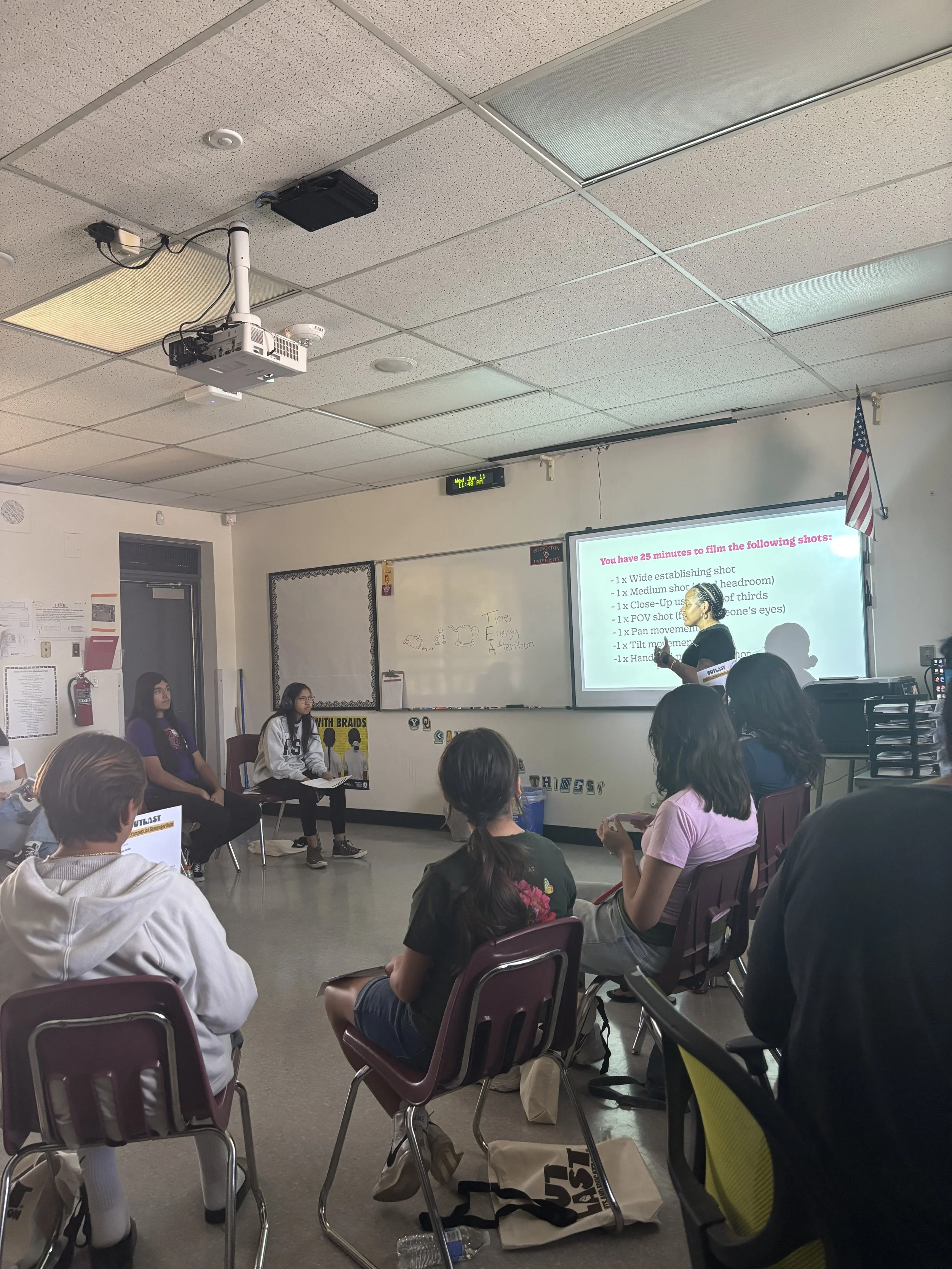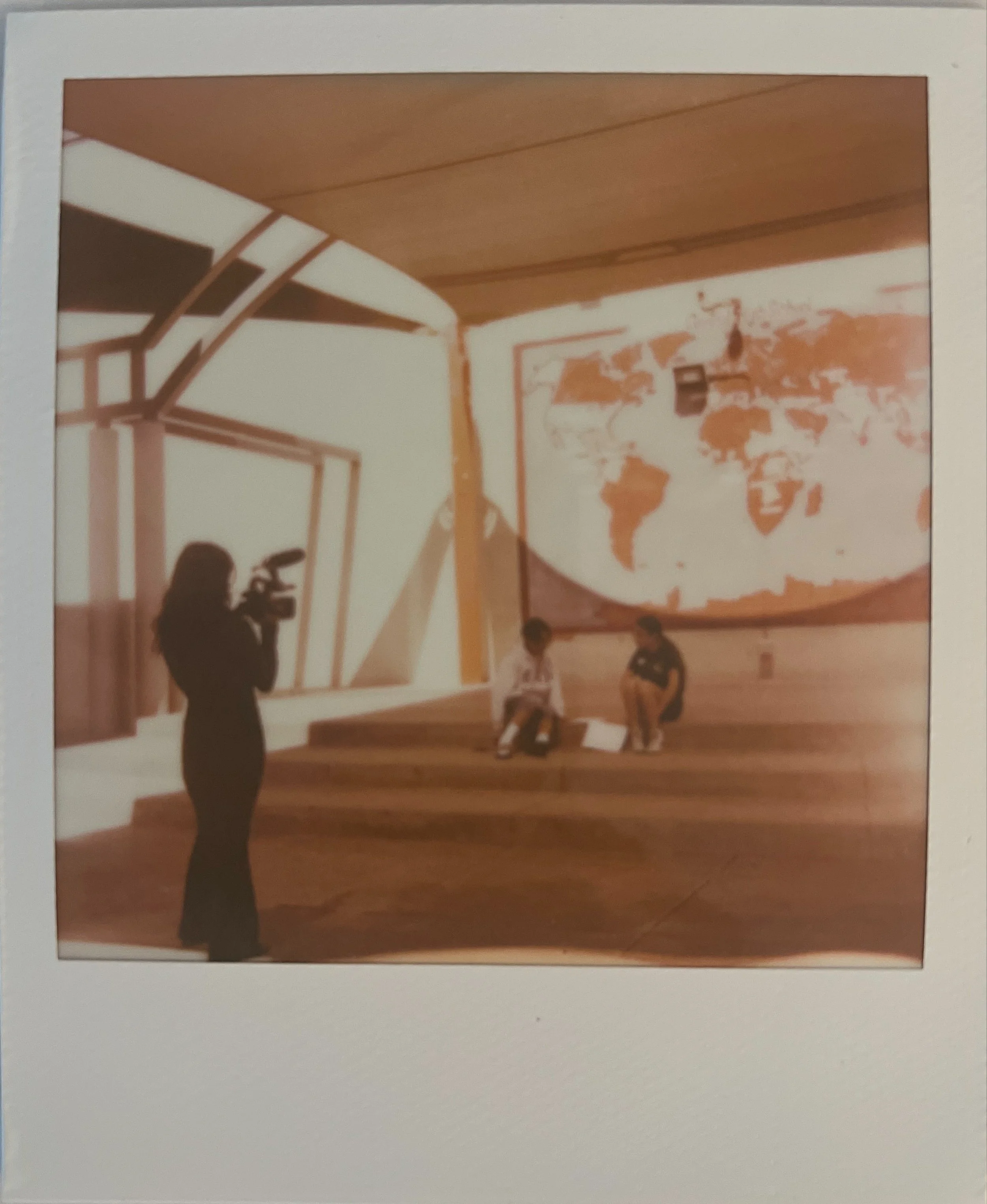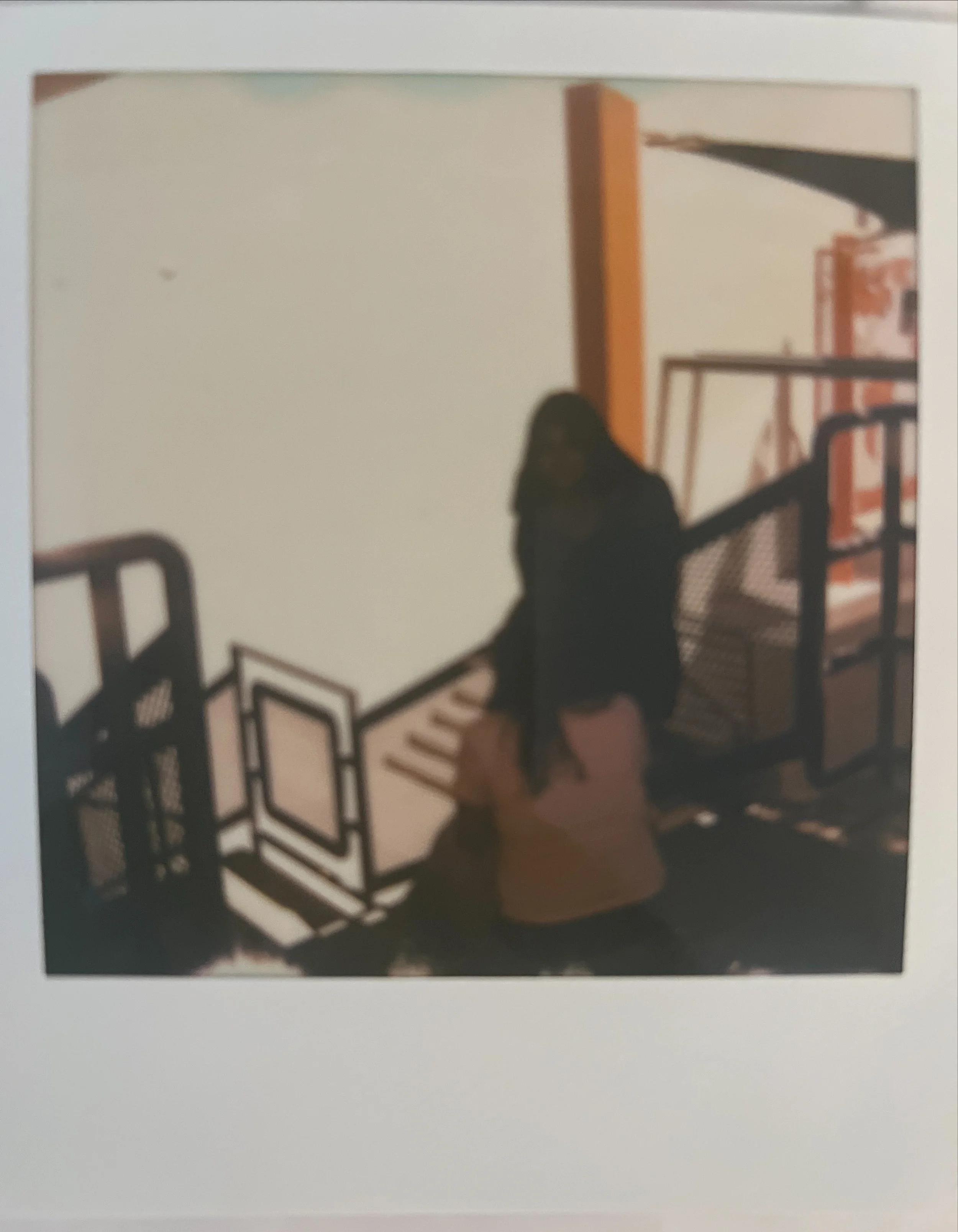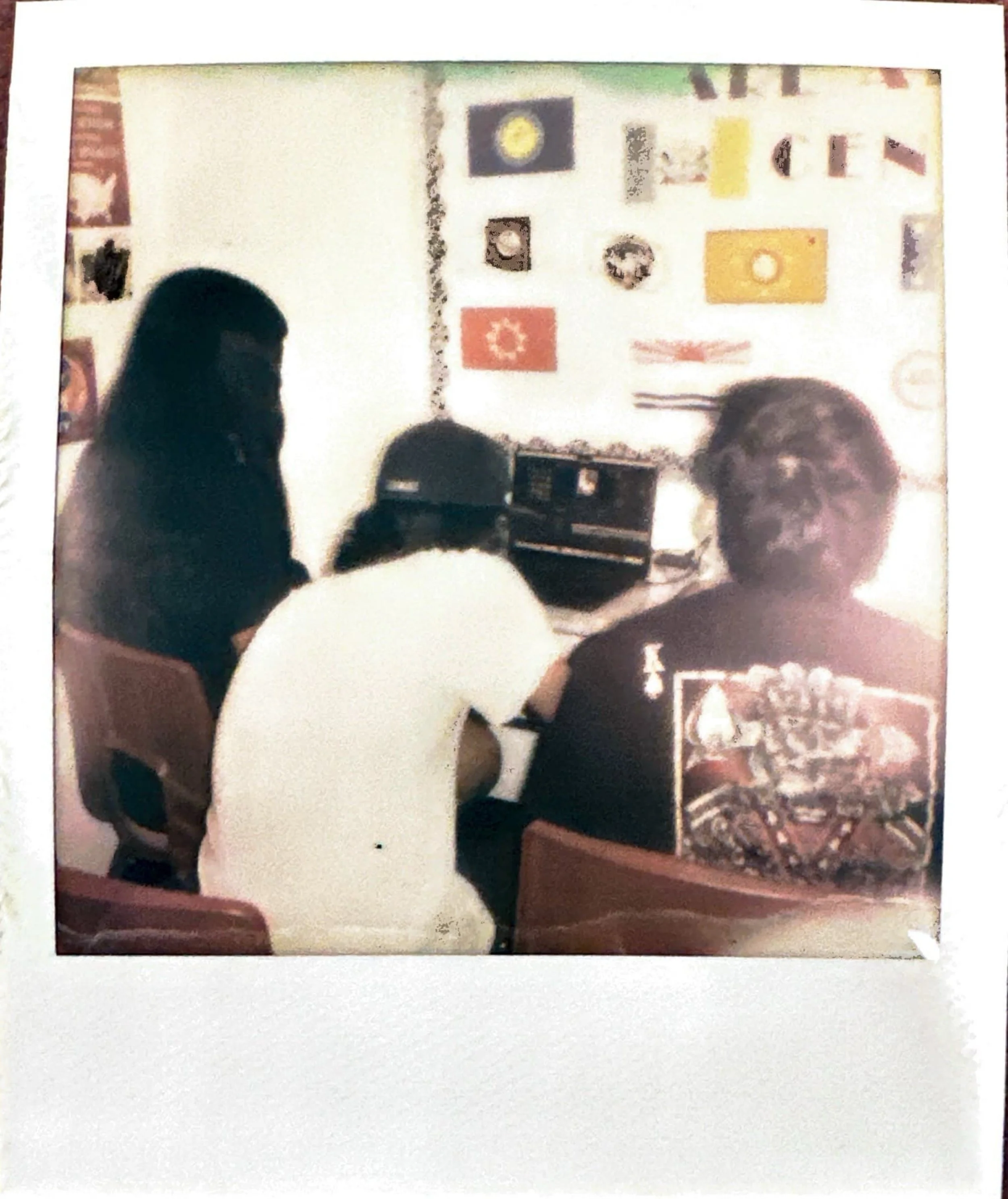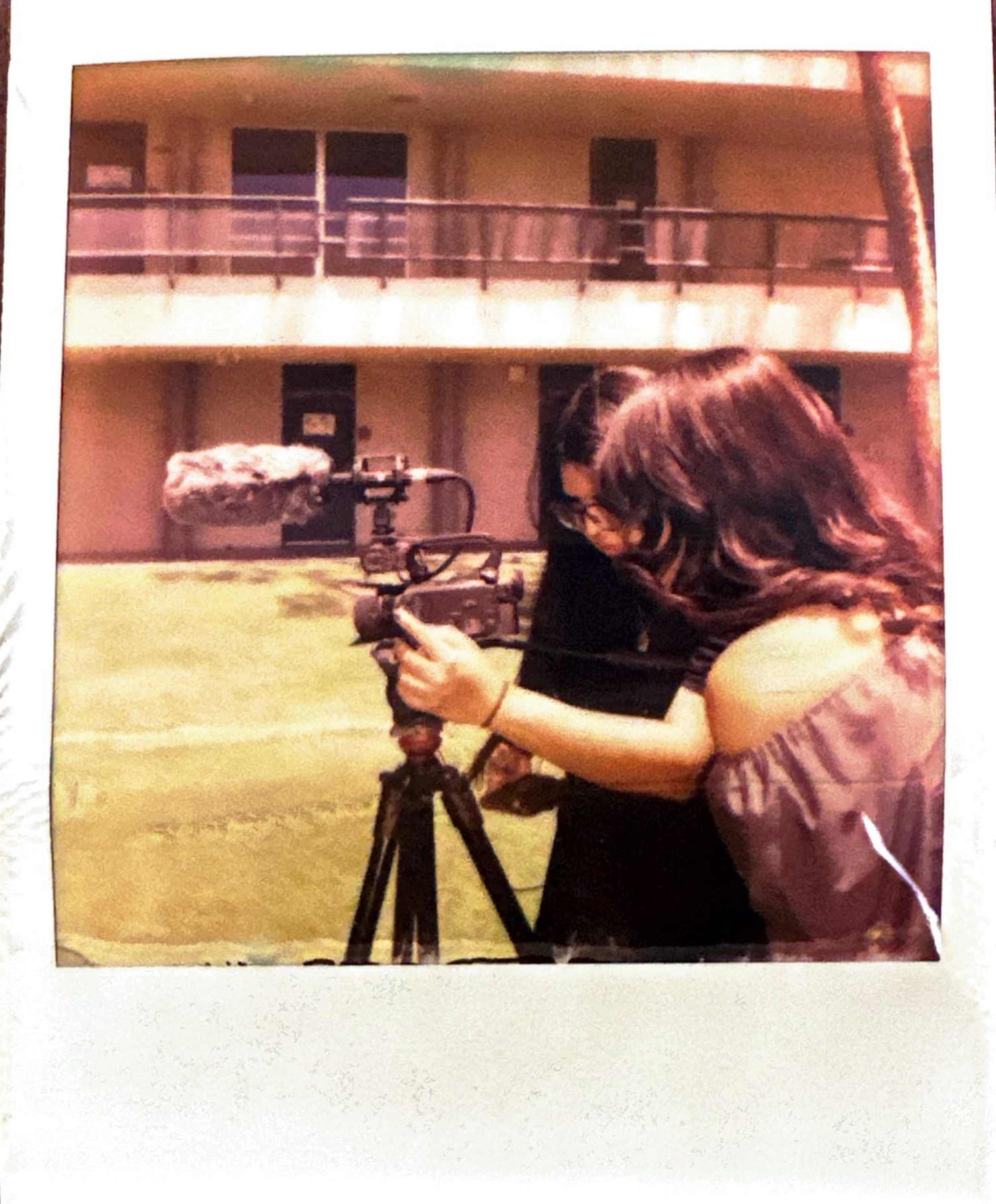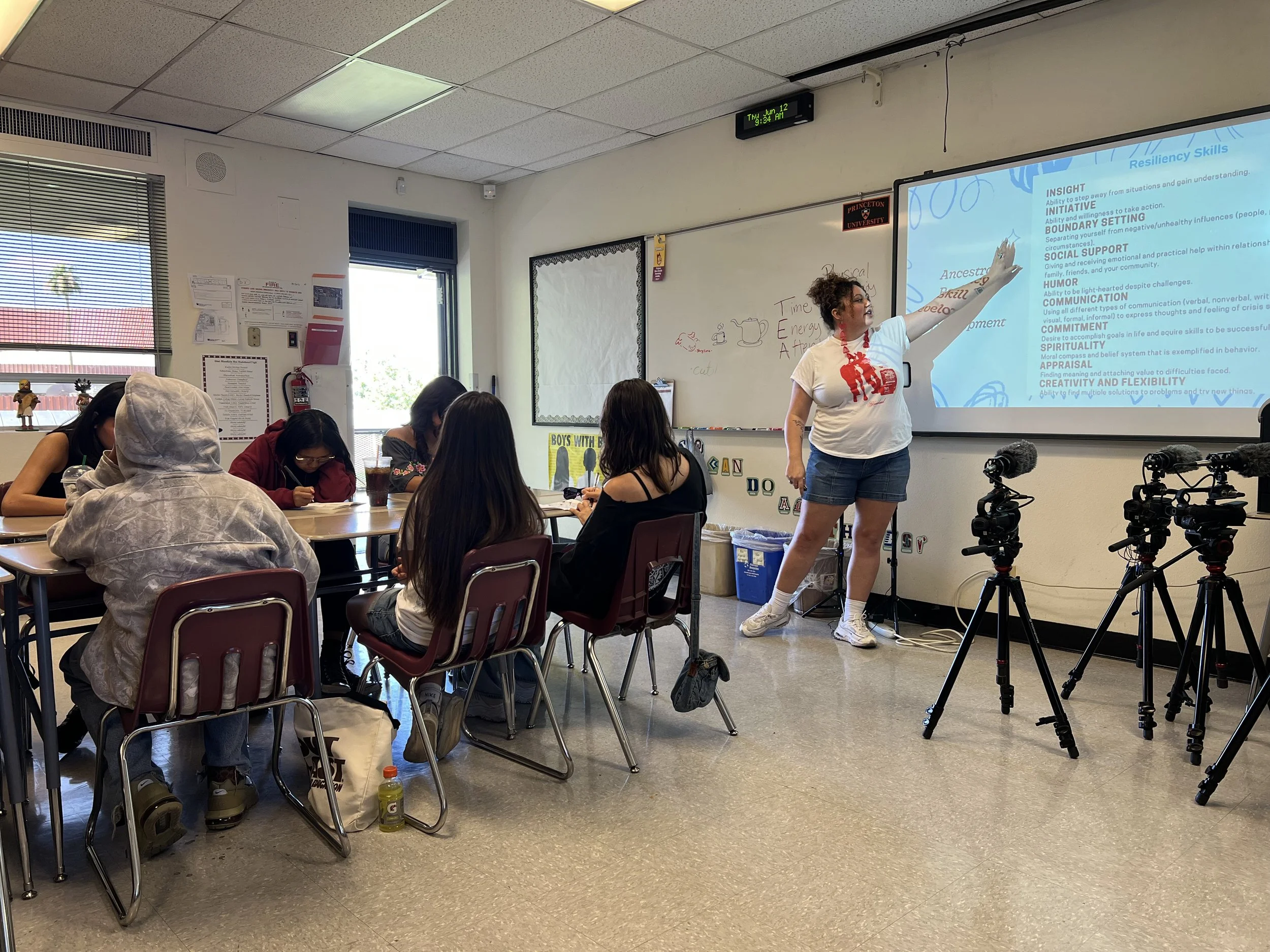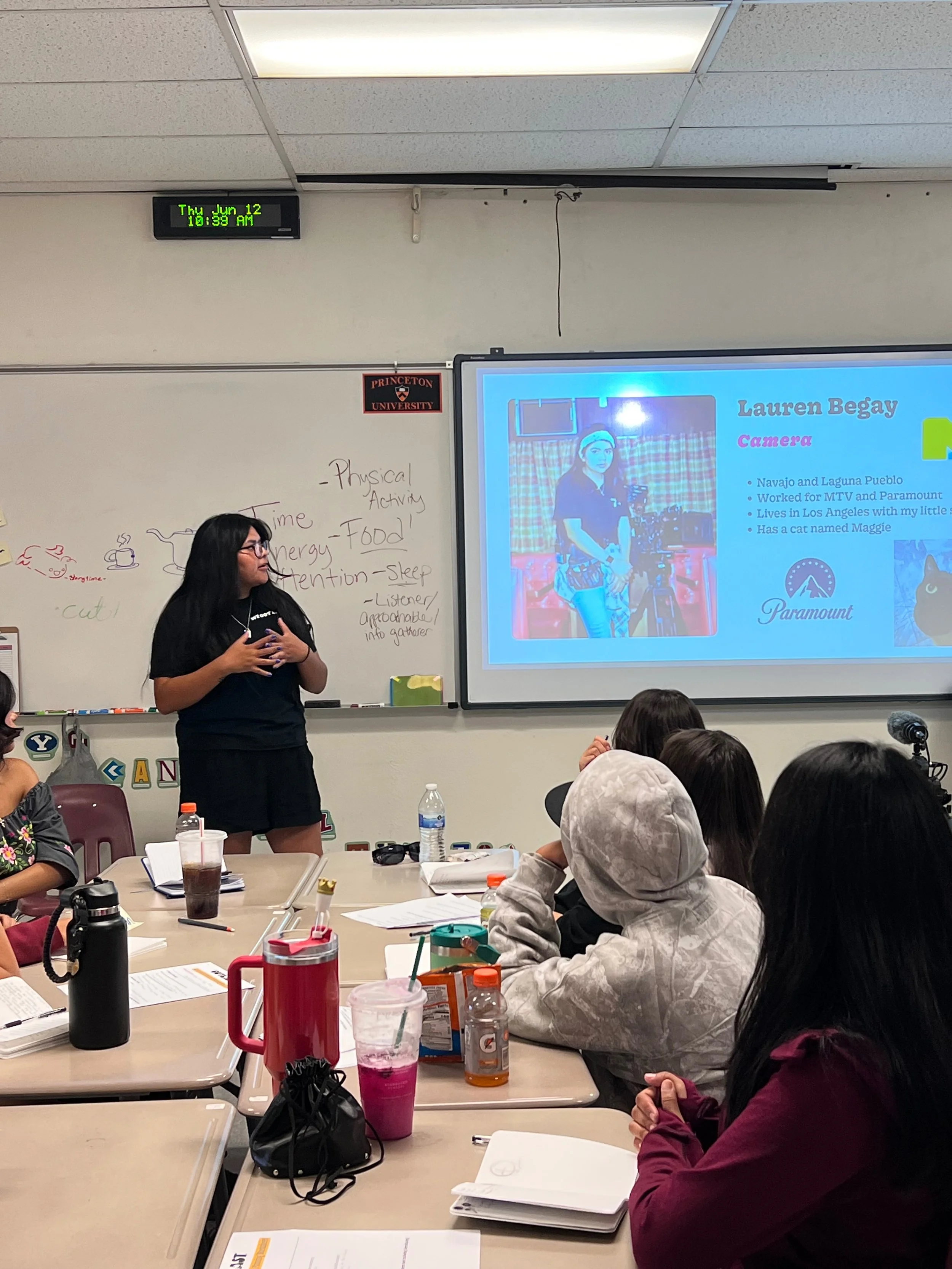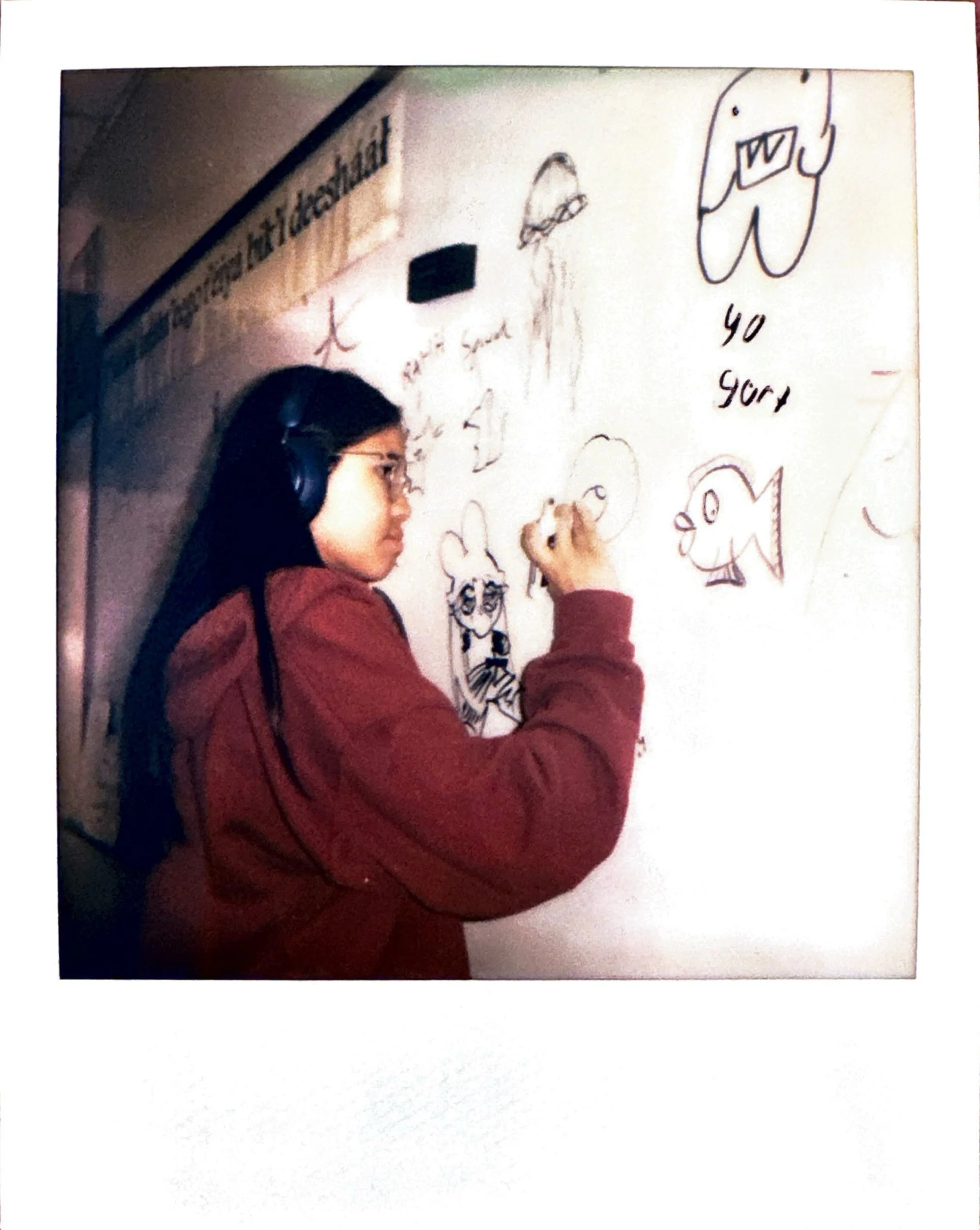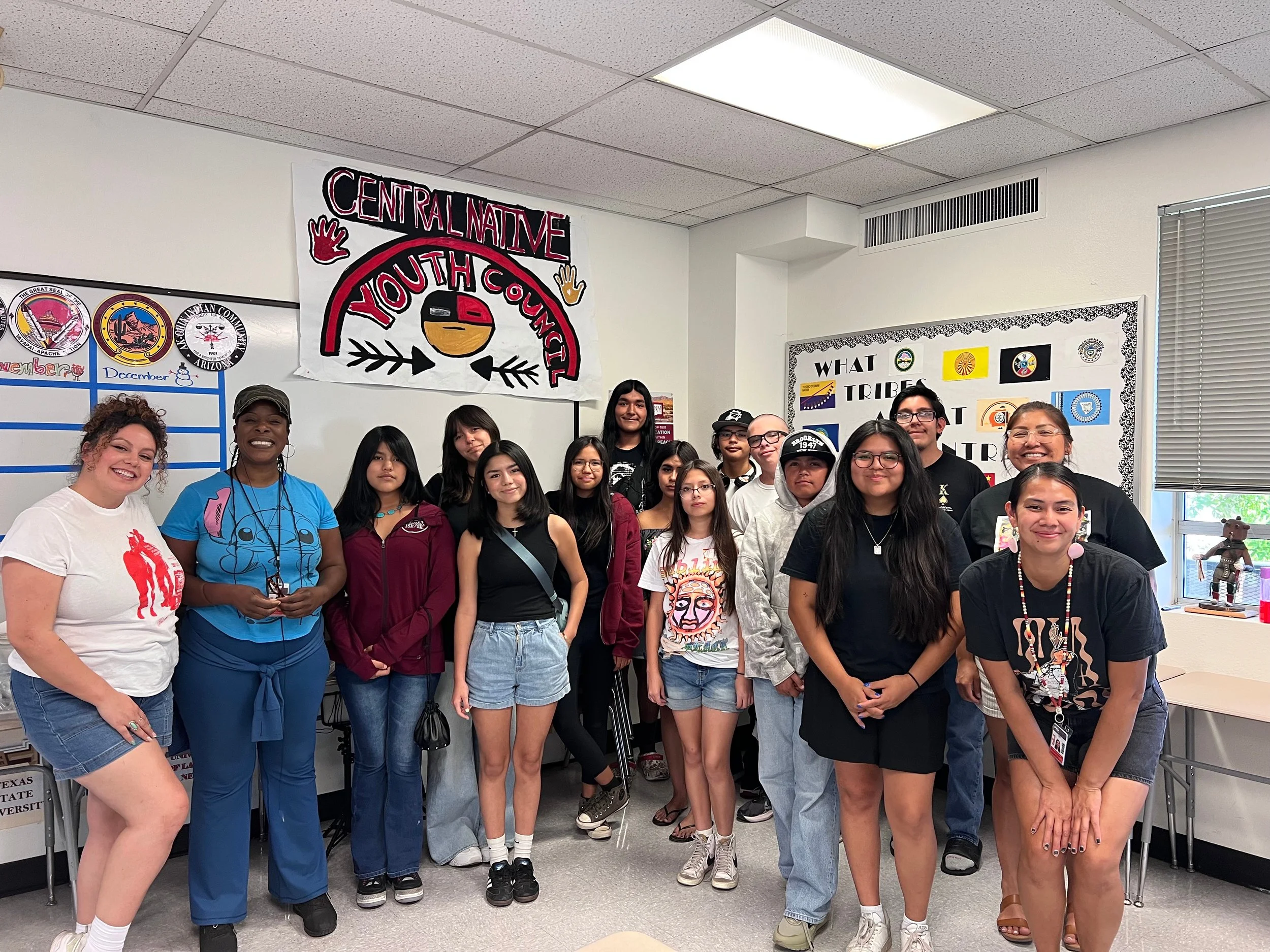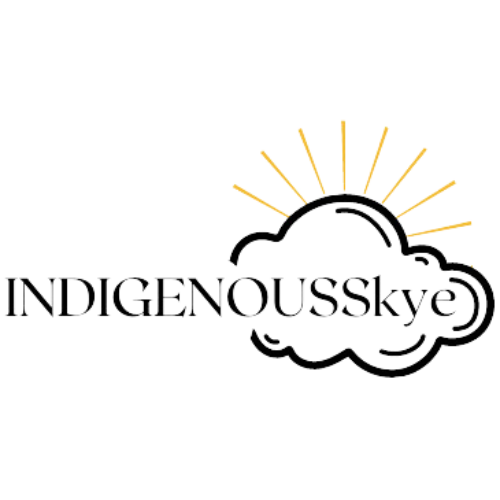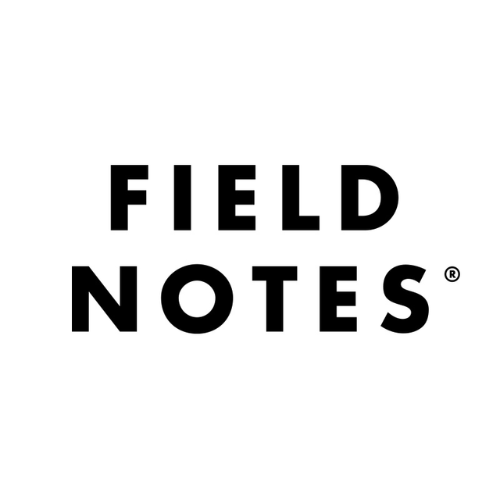OUTLAST ON THE GO
“The most joyful part of the program was having the opportunity to meet new people and collaborate with other Indigenous students. I also enjoyed everything overall. It was super fun.
-Emmanuel
Outlast partnered with the Phoenix School District’s Native American Education Program to bring our one-week pop-up film institute to middle and high school youth.
Story, Camera Skills & Set Etiquette
This week-long Phoenix camp introduces students to the basics of filmmaking through storytelling, hands-on camera training, and collaborative production. Each day builds toward the creation of a short, student-produced documentary. By learning and practicing different filmmaking roles, students gain a strong foundation in visual storytelling and on-set collaboration.
Then, students brainstormed and chose topics for their own 60-second group documentaries.
Day 1
We began with a group discussion and watched short examples to explore what makes a strong story.
On the first day of camp in Phoenix, students kicked off their filmmaking journey by learning how to tell real and meaningful stories through short documentaries.
After lunch, we focused on basic camera operations.
Students got hands-on experience adjusting ISO, shutter speed, and aperture. They also learned how to set white balance, keep their shots in focus, and hold the camera steady.
Next, we introduced the basics of visual storytelling.
Students learned how camera framing can express emotion, mood, and meaning without needing words.
Then, students headed out for a camera scavenger hunt to put their new skills into practice.
To wrap up the day, students explored how a film set works by trying out different roles:
director (guides the story), camera operator (films the scenes), actor or subject (on camera), gaffer (handles lighting), and framing coach (makes sure each shot looks good).
They practiced using set cues like “Rolling!” and “Action!”
“I know how to use a camera and that lighting affects how things look but I never actually tried it out or had everything just there for me to use, so I can do all of that now. I also never knew I could adjust the exposure and white balance for the place I learned that.”
- Eliza
We started with a lesson on lighting for documentaries, exploring how light affects the mood of a scene and how it can guide how we feel about a person or story.
Students learned the difference between natural and artificial light, then broke into groups to try out four lighting styles—from natural, honest setups to dramatic “true crime” shadows—rotating through roles like director, camera operator, subject, and gaffer.
Phoenix Camp:
Lighting, Editing & Set Basics
Day 2
Next, students were introduced to editing theory and workflow using DaVinci Resolve.
They discovered how editing helps build emotion, control pacing, and shape meaning—especially in a short, 60-second documentary.
We also talked about editing ethics and how to treat real people’s stories with care and respect.
Each hands-on activity helped students solidify what they learned—by lighting, recording, and collaborating, they’re becoming stronger visual storytellers ready to bring their group documentaries to life.
“A challenge I met during the film institute was being able to find common ground with my peers. There were times when we bumped heads, whether that be with agreeing on ideas, deciding official roles, or even from the beginning of camp deciding our documentary topic. We learned to overcome this by hearing everyone out and being able to come to a consensus by the popularity of votes, and interests.”
-Lindy
The energy on Day 3 was high—students arrived excited and ready to bring their stories to life. After two days of planning, practice, and preparation, it was finally time to film.
Classrooms, hallways, the library, and outdoor spaces turned into film sets as students captured interviews and b-roll footage.
They worked together to solve problems on the fly: shifting locations to find better light, re-recording dialogue when background noise got too loud, or adjusting shots to make them more emotionally effective.
Phoenix Camp:
Lights, Camera, Action!
Day 3
Throughout the day, students supported each other not just technically—but creatively.
You could hear one group reminding each other of shot types they learned on Day 1, while another gave thoughtful feedback to their subject between takes.
“Something I learned about myself during film camp, I was a pretty good director and leader. Because my crew members listened to me and we had ideas when we got stuck. I had a fun time with the crew and created memories with them.”
-Kai
On the final day of camp, the classroom transformed into a small editing studio as students huddled over laptops, reviewing their footage and bringing their stories together.
Some groups worked quickly to trim interviews and arrange their b-roll, while others spent more time choosing the right music or adjusting their text overlays.
Then, at 2:00 PM, it was time to celebrate.
Chairs were rearranged for a pop-up screening, and each group took turns introducing their film.
Laughter, applause, and a few heartfelt moments filled the room as we watched the first-time filmmakers completed documentaries.
From Rough Cuts to Red Carpet
Using DaVinci Resolve, students learned how editing isn’t just about cutting clips—it’s about emotion, rhythm, and storytelling.
They made careful decisions about what to include, what to leave out, and how to make their message clear in just 60 seconds.
Instructors guided them through pacing, audio balance, and even troubleshooting software hiccups, but every creative decision came from the students themselves.
Day 4
“Outlast gave me a better understanding of how to work the camera and how all roles were important. For example, let's say the gaffer wasn't there- there would be no lighting. Or a cameraman because if no one there knew how to work a camera, they would be unable to film.”




